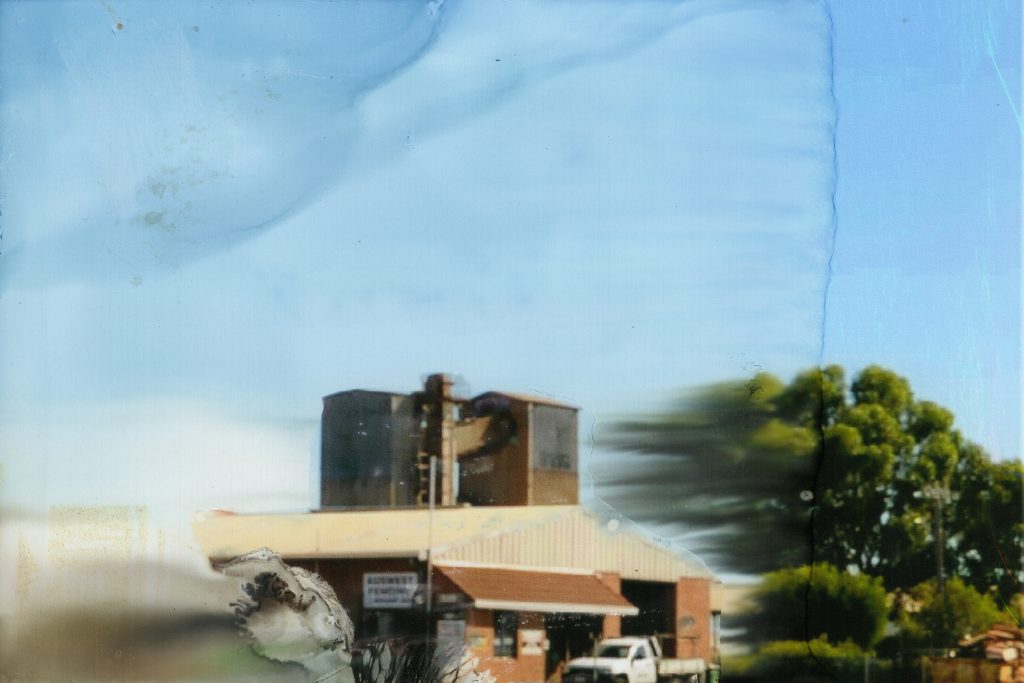Abstract
This paper takes embodied experiences of printmaking as its point of departure and examines two artworks, Susanna Castleden’s 1:1 Gangway (2016) and Lydia Trethewey’s Interstices (2017), in order to elucidate thepresence of stillness and movement in time-intensive practices. Underpinned by a curiosity of fast-slow dynamics and continuums, and informed by cultural geography, these works probe mobile relationships revealed in cruise ship and car travel respectively. Through the use of frottage and stop-motion animation, the mobility-immobility dichotomy is challenged, thereby intimating at an understanding of pause, place and pace as mutually enfolded. Importantly, both of these technical processes are laborious and foreground the artist’s body in a time-based connection with the work; accelerated and protracted. In effect, the body becomes a fulcrum for considering notions of passage and terminus. As co-authors analysing the parallels in these approaches to making, the concept of prints as mimetic reproductions is also interrogated. The printmaker is considered in these time- intensive encounters as both composer and performer, disrupting exactness through hands
in motion, within a mutable world. By scrutinising the intersections of 1:1 Gangway and Interstices, this paper thus points towards expanded understandings of time-intensive printmaking that have arisen primarily through practice itself.
References
Barthes, R. (2010) Camera Lucida: Reflections on Photography. Translated by Richard Howard. New York: Hill and Wang.
Bissell, D. (2010) Vibrating materialities: mobility-body-technology relations. Area. 42 (4), pp. 479-486. Available from: doi:10.1111/j.1475- 4762.2010.00942.x.
Borges, J.L. (1998) On exactitude in science. In: Collected Fictions. Translated by Andrew Hurley. New York: Viking, Available from: http://www.wtf.tw/ref/borges_ficciones_trans_hurley.pdf [Accessed May 2017]. Cresswell, T. (2006) On the Move: Mobility in the Modern Western World. New York: Routledge.
———. (2012) Mobilities II: still. Progress in Human Geography. 36 (5), pp. 645-653. Available from: doi:10.1177/0309132511423349.
Crang, M. (2002) Between places: producing hubs, flows, and networks. Environment and Planning A: Economy and Space. 34 (4), pp. 569-574.
Dewsbury, J.D. (2015) Non-representational landscapes
and the performative affective forces of habit: from ‘Live’ to
‘Blank’. Cultural Geographies. 22 (1): pp. 29-47. Available from: doi:10.1177/1474474014561575.
Eco, U. (1988) On the impossibility of drawing a map of the empire on a scale of 1 to 1. In: How to Travel with a Salmon and Other Essays. London: Random House, pp. 84 – 94.
Featherstone, M. (2004) Automobilities: an introduction. Theory, Culture & Society. 21 (1), pp. 1-24. Available from: doi:10.1177/0263276404046058.
Gover, K.E. (2015) Are all multiples the same? The problematic nature of the limited edition. In: Pelzer-Montada, R., ed., (2018) Perspectives on Contemporary Printmaking. Manchester: Manchester University Press, pp.162- 173.
Hawkins, H. (2014) For Creative Geographies: Geography, Visual Arts and the Making of Worlds. New York: Routledge.
Merriman, P. (2004) Driving places: Marc Augé, non-places, and the geographies of England’s M1 motorway. Theory, Culture & Society. 21 (45), pp. 145-168. Available from: doi:10.1177/0263276404046065.
Rexer, L. (2013) The Edge of Vision. New York: Aperture.
Rancière, J. (2011) What medium can mean. Trans. by Steven Corcoran. Parrhesia. 11, pp. 35-43.
Solnit, R. (2000) Wanderlust: A History of Walking. London: Penguin.
Thrift, N. (2004) Driving in the city. Theory, Culture & Society. 21 (1), pp. 41-59. Available from: doi:10.1177/0263276404046060.
Tuan, Y.F. (1977) Space and Place. Minneapolis: University of Minnesota Press.
Wall, J. (1995) ‘Marks of indifference’: aspects of photography in,
or as, Conceptual art. In: Goldstein, A. and Rorimer, A. eds. (1995) Reconsidering the Object of Art, 1965-1975. Los Angeles: Museum of Contemporary Art, pp. 247-267.

This work is licensed under a Creative Commons Attribution 4.0 International License.
Copyright (c) 2020 Lydia Trethewey, Susanna Castleden
